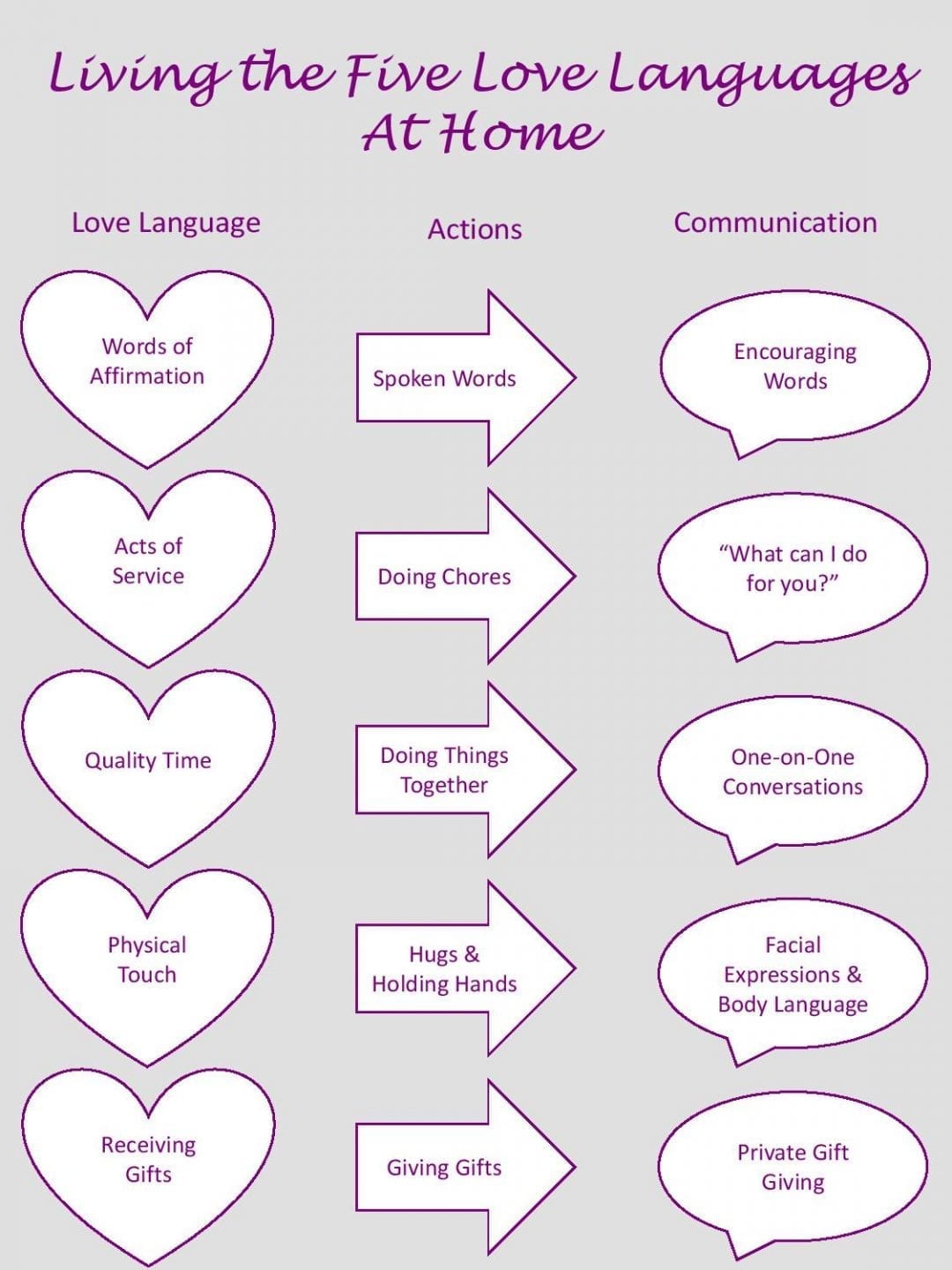Living a fulfilling and harmonious relationship is the goal of every couple. We all want to feel loved and understood by our partner, and sometimes it can be difficult to navigate the complexities of emotions and communication. That’s where the concept of the five love languages comes in.
Finding Your Love Language
The five love languages, as devised by Dr. Gary Chapman, are a framework for understanding and expressing love in a way that resonates with your partner. These languages are words of affirmation, acts of service, receiving gifts, quality time, and physical touch. Each person has a primary love language that they respond to most deeply, and knowing your partner’s love language can greatly enhance your relationship.
 Understanding and speaking your partner’s love language is like speaking their emotional dialect. It allows you to communicate your love in a way that they can truly understand and appreciate. Whether it’s through words of affirmation, acts of service, or quality time together, speaking your partner’s love language is a powerful and transformative way to strengthen your bond.
Understanding and speaking your partner’s love language is like speaking their emotional dialect. It allows you to communicate your love in a way that they can truly understand and appreciate. Whether it’s through words of affirmation, acts of service, or quality time together, speaking your partner’s love language is a powerful and transformative way to strengthen your bond.
The Love Language Quiz
If you’re unsure about your love language or your partner’s, there’s a simple quiz that you can take. This quiz helps you identify your primary and secondary love languages, providing insight into what makes you feel most loved and cherished. It is a valuable tool that can open up conversations and deepen your understanding of each other.
 The love language quiz is available online and can easily be completed at home. It consists of a series of questions that require you to reflect on how you feel loved and what actions make you feel cherished. Once you’ve completed the quiz, you’ll receive your love language results and can begin using this knowledge to enhance your relationship.
The love language quiz is available online and can easily be completed at home. It consists of a series of questions that require you to reflect on how you feel loved and what actions make you feel cherished. Once you’ve completed the quiz, you’ll receive your love language results and can begin using this knowledge to enhance your relationship.
Applying the Love Languages
Once you have discovered your love language and your partner’s, the next step is to apply this knowledge in your day-to-day life. For example, if your partner’s love language is acts of service, you can show your love by performing small tasks that make their life easier. This could be preparing their favorite meal, doing the laundry, or running errands for them.
 Similarly, if your partner’s love language is words of affirmation, you can express your love and appreciation through heartfelt compliments and verbal encouragement. Remember that love languages are not one-size-fits-all, so it’s important to tailor your expressions of love to what resonates with your partner.
Similarly, if your partner’s love language is words of affirmation, you can express your love and appreciation through heartfelt compliments and verbal encouragement. Remember that love languages are not one-size-fits-all, so it’s important to tailor your expressions of love to what resonates with your partner.
The Five Love Languages for Kids
The concept of love languages is not limited to romantic relationships alone. It can also be applied to parent-child relationships. Children have their own unique love languages, and understanding them can greatly enhance your connection with your little ones.
 Just like adults, children perceive love differently. Some children respond more to physical touch, while others thrive on words of affirmation or quality time. Understanding your child’s love language can help you create a nurturing environment that fosters their emotional well-being.
Just like adults, children perceive love differently. Some children respond more to physical touch, while others thrive on words of affirmation or quality time. Understanding your child’s love language can help you create a nurturing environment that fosters their emotional well-being.
Conclusion
In conclusion, the concept of the five love languages is a valuable tool for enhancing relationships and fostering understanding. By identifying your love language and that of your partner or child, you can communicate your love in a way that truly resonates with them. Whether it’s through acts of service, words of affirmation, quality time, receiving gifts, or physical touch, speaking the love language of your loved ones is a surefire way to create a deeper connection and cultivate a fulfilling relationship.
So, why not explore the concept of the five love languages and take the love language quiz today? It could be the key to unlocking a whole new level of love and connection in your relationships.